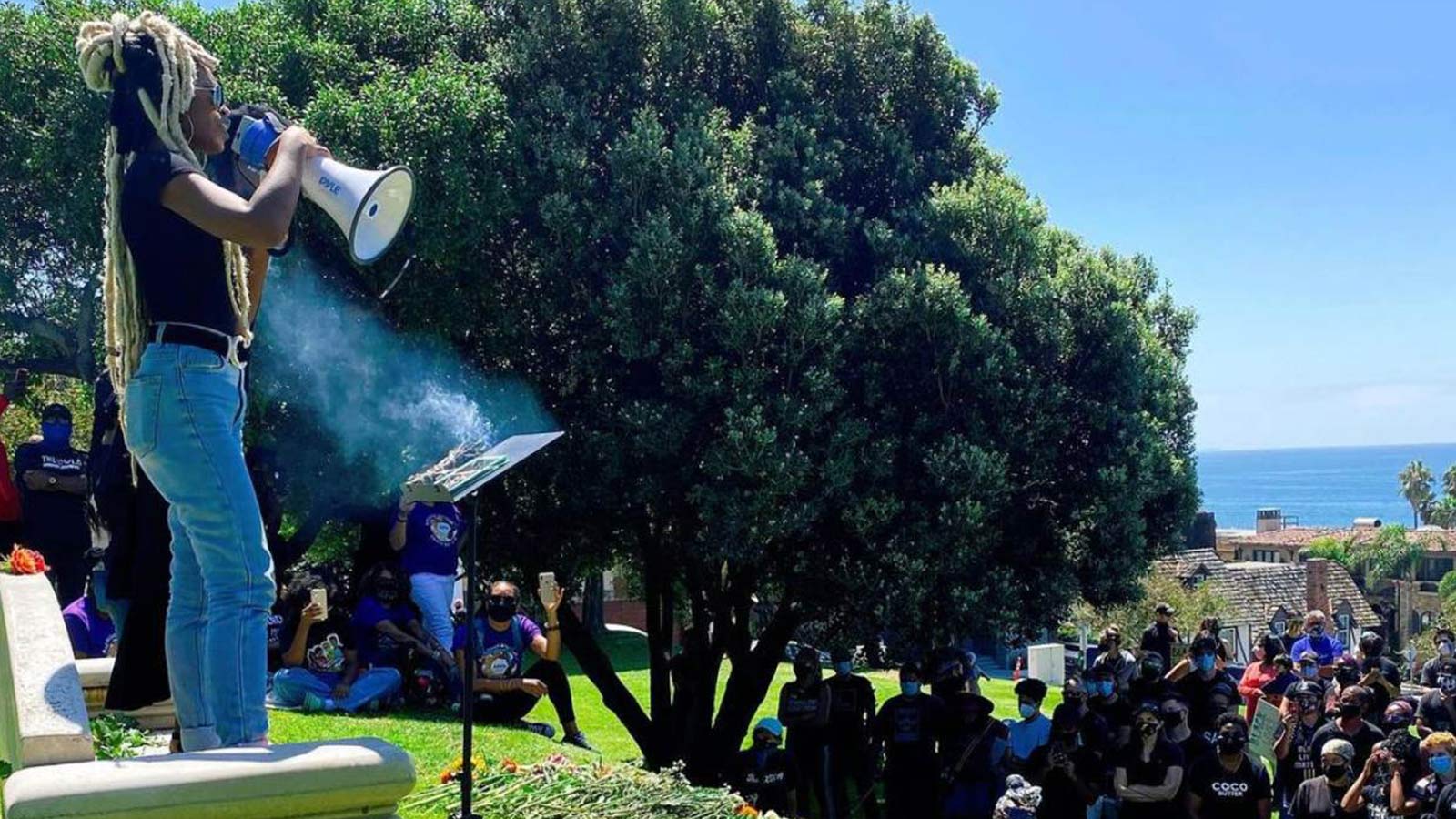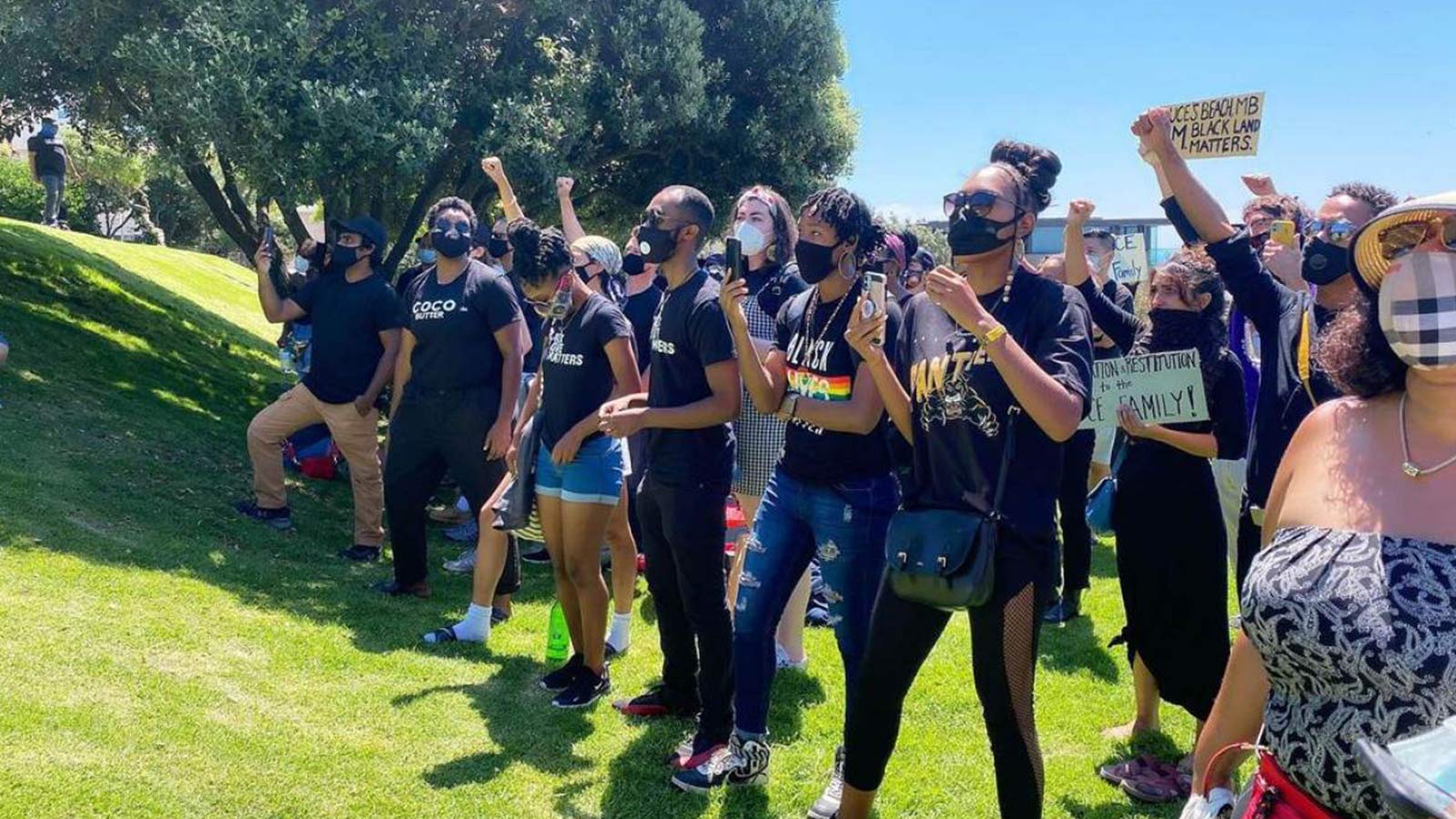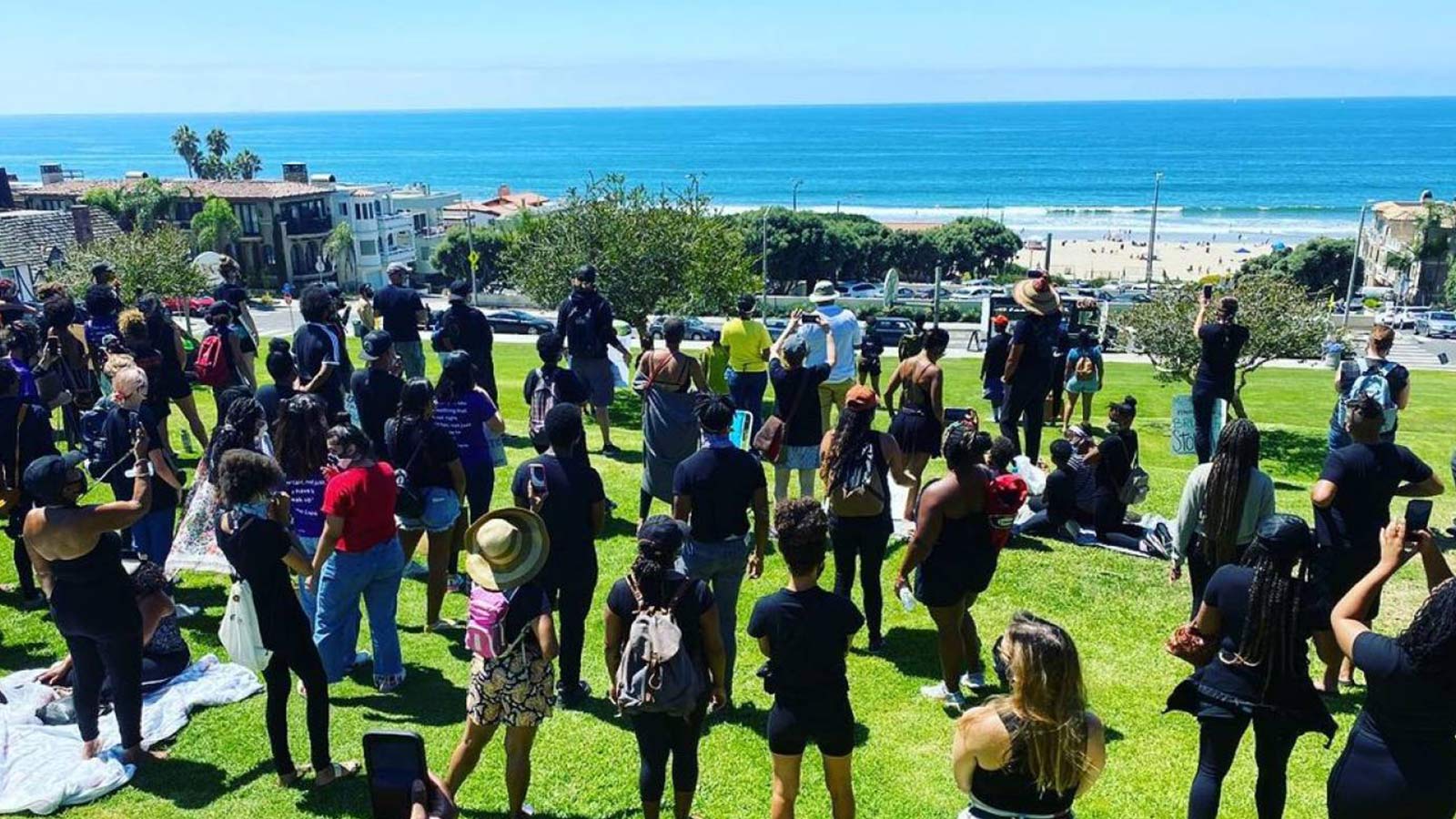‘Surging’ public discussions on reparations to atone for the effects of slavery and structural racism in the U.S. are currently underway.
* California move to give land back to Black family sparks nationwide interest
* National reparations bill sees first-ever movement
* Cities, states move forward on reparations actions
Kavon Ward had never thought much about Black landholdings until after George Floyd’s death in police custody in May 2020, when suddenly acquaintances kept emailing her about the California park of Bruce’s Beach.
The area in Manhattan Beach, now worth tens of millions of dollars, had been a buzzing Black resort spot a century ago until the land was seized from the Bruce family by the city council in 1924.
“I remember saying I want to see policy changes to get the land deeded back to the family,” said Ward, 40, who lives near the area and held an event to draw attention to the situation.
Through the work of Ward and others, California Governor Gavin Newsom on Sept. 30 cleared the way for Los Angeles County to give the land back to the Bruce family.
The move is part of a wave of interest in the role of land in reparative justice to tackle a century of dramatic land loss among Black Americans, due to factors such as predatory developers and a lack of access to the legal system, as well as discrimination stretching to the country’s independence.
“Essentially this is the first time in history where any government body has agreed to give land back to Black people,” said Ward.
“So folks have been reaching out to me, saying, ‘I heard what you are doing, and can you help me?'”
Among them is Winston Willis, now 82, an entrepreneur who decades ago owned dozens of properties and businesses along a strip in Cleveland, Ohio, that became a hub of the city’s Black community.
At one point, it was “the most famous intersection in the state,” said his sister Aundra Willis Carrasco.
But the city had eyed the land to facilitate the expansion of the flagship Cleveland Clinic, Willis Carrasco said by phone, and after years of intimidation Willis was arrested in 1982 and charged with writing a bad check worth $400 – a charge his sister calls bogus.
He was held in jail, and “during those few days the bulldozers came and levelled the properties,” she said, after which the properties were given to the Cleveland Clinic. “They took everything he had,” said Willis Carrasco.
A spokeswoman for the Cleveland Clinic declined to comment; the city of Cleveland did not respond to a request for comment.
‘Surging’ Reparations Talk
Public discussion on reparations to atone for the effects of slavery and structural racism is currently “surging” in a way Ron Daniels, convenor of the National African American Reparations Commission, never thought he would see.
While a bill on reparations was first introduced in Congress in 1989, this past April for the first time a similar proposal passed out of a U.S. House committee and is now awaiting a full vote.
While the issue has often been dominated by financial compensation, land plays a key role “historically and even contemporarily”, Daniels said.
Black people were excluded from the provision of land early in the country’s history, he said. Later they experienced discrimination under agricultural policies, saw communities demolished for large projects like highways, and today face gentrification.
The commission, a group of eminent figures, has thus adopted specific recommendations around land.
“Parcels of public land across the country should be made available to African Americans for various (purposes) – economic development, hospitals and more,” Daniels said.
Cities and states are already starting to move forward on the issue.
The commission was involved in this year’s landmark decision by the city of Evanston, Illinois, to create a reparations program that includes particular focus on housing – applications for which opened last month.
An umbrella group of mayors focused on reparations includes 13 cities, while California’s first-ever reparations task force began meeting this summer.

Demonstrators call for the return of Bruce’s Beach to the Bruce family in October 2020 in Manhattan Beach, California. Handout photo by Starr Swift.
New Generation’s Focus
Land has seen renewed interest among Black activists, said Quinton Sankofa, co-director of Movement Generation’s Justice and Ecology Project, which focuses on resilient local economies.
In 2015, Movement Generation and another activist group, BlackOUT Collective, created the Black Land & Liberation Initiative, which sought to bring new focus to land issues, he said.
After engaging in activist trainings, the effort took its first major step in 2017, with teams in multiple U.S. cities engaging in direct actions on Juneteenth, which commemorates the emancipation of enslaved Black Americans.
Activists in Oakland, California, took over a parking lot, for instance, and created a park, building benches, putting up donated play equipment and more.
Since then, the role of land amid the reparations discussion has gained attention, Sankofa said.
“Giving a bunch of Black people cash is not going to solve the problem,” he said. “Land is what we need to repair our communities.”
Such concerns are not confined to urban areas.
In the country’s Northeast, land shortages are particularly acute and getting worse amid pandemic-linked land speculation as urbanites buy up land for second homes, said Stephanie Morningstar, a co-director with the Northeast Farmers of Color Land Trust.
Many farmers of color, including herself, also continue to be the target of racial violence and intimidation from locals, she said.
In addition to working to create a land trust, Morningstar and others have since 2018 piloted “peer-to-peer” land donations and a voluntary tracking mechanism called the Reparations Map.
“We’re seeing a trend of people starting to reach out to offer land. Last year, there were about $115,000 raised that went to Reparations Map projects,” she said.

Demonstrators call for the return of Bruce’s Beach to the Bruce family in October 2020 in Manhattan Beach, California. Handout photo by Starr Swift.
Land Claims
Following her work at Bruce’s Beach, Ward in July co-founded a national initiative, Where Is My Land, seeking to help Black families recover what they see as stolen property.
“This is a problem that goes far beyond Bruce’s Beach, and we’re only starting to scratch the surface,” said co-founder Ashanti Martin, 43.
In the weeks since Governor Newsom’s bill signing, the new group has been inundated with requests, said Martin.
“That’s a common theme: Once land has been identified as potentially profitable and that Black people own that land, then it becomes a target,” she said.
That is how Winston Willis and his sister see what happened in Cleveland, and the reverberations are still being felt.
“Land ownership is how wealth is accumulated and generational wealth is transmitted,” said Willis Carrasco, noting the property loss has meant her brother’s children were unable to benefit from their father’s work.
“The very fabric of my brother’s essence was stripped away.”
Source: Reuters














